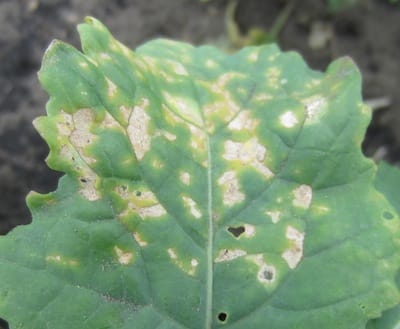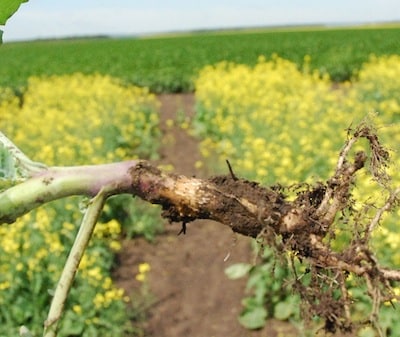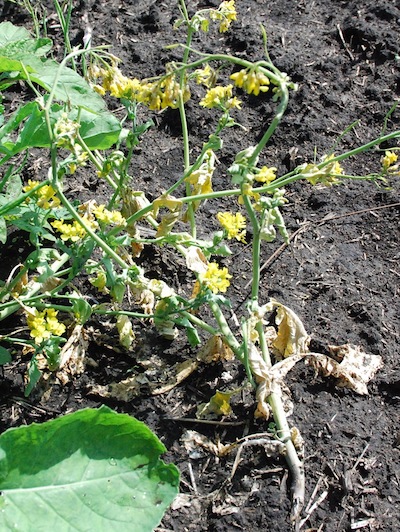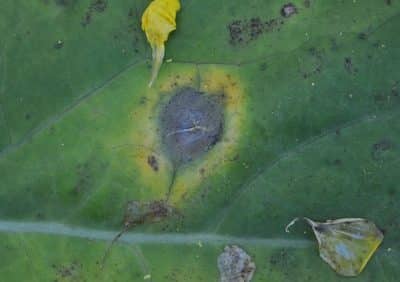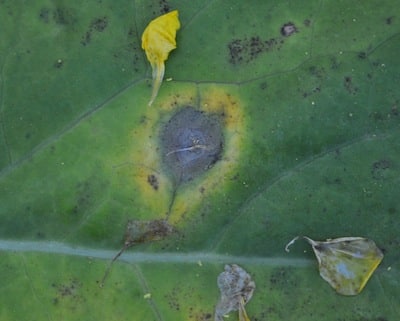
The window to control disease in canola is closed, so why scout? Well, because the period from podding to harvest is the easiest time to see diseases. And if you can identify which diseases are present, you can adjust your variety choice, crop rotation and fungicide use for subsequent years.
Symptoms are maximized at physiological maturity of the plant, which is still a few weeks away for most crops, but while checking for insects this week, this is what you might find…
Disease identification at late flowering/early podding:
Sclerotinia stem rot will start as discoloration of the leaf or stem around a rotting petal. See the photo at the top.
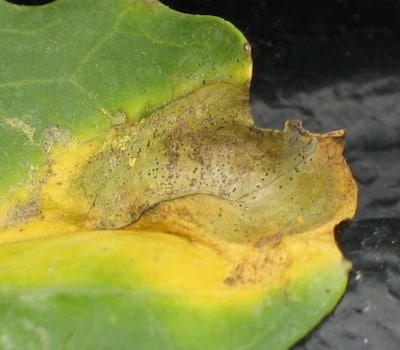
Blackleg may show some upper stem lesions or leaf lesions, white or grey with a dark border. Fruiting bodies called pycnidia — which look like black specks — form in the centre of the lesion. Lesions near the base of the stem may be evident in high risk fields. See more blackleg photos at the bottom of this article. They were taken July 23, 2013 at a blackleg trial in Manitoba.
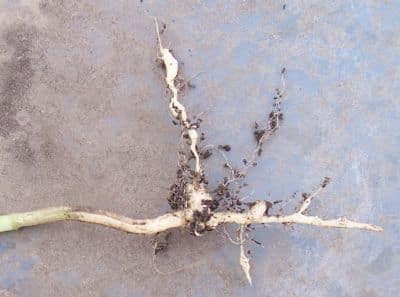
Clubroot galls can be visible on roots even if plants show no above-ground symptoms. Pull up any plants that show signs of premature colour change to see if it’s clubroot, and not sclerotinia stem rot or blackleg. At field entrances, where clubroot is most likely to be found first, pull up a few random plants that show no above-ground signs of disease to see if galls are forming.
